It may be the most underappreciated major historic building in New York City. Finally, however, the magnificent powerhouse that generated electricity for New York City’s pioneering rapid transit subway system when it first opened in 1904 is a protected city landmark.
The New York City Landmarks Preservation Commission’s (LPC’s) recent action to designate the IRT Powerhouse (Interborough Rapid Transit Company Powerhouse) means the city has now protected it for future generations. The imposing structure, which takes up a full Manhattan city block from West 58th to West 59th streets and 11th to 12th avenues, is truly a building from another, very different era, with a splendid classical exterior design that heralded its civic importance. At the time of its completion in 1904, the building was the largest powerhouse in the world. Within its massive walls was an engineering, technical, and industrial marvel.
Yet, the IRT Powerhouse was in landmark limbo for many, many years. This limbo ended early in December when the LPC voted unanimously to designate the powerhouse as a New York City landmark, a protection that various groups and activists had sought for years.
Moreover, it’s far from a place sitting fallow: Today, the powerhouse plays an important role in the city’s utility infrastructure, as a Consolidated Edison steam and electric generating plant for hundreds of Manhattan buildings, including the Empire State Building and United Nations, as the LPC noted in announcing the decision.
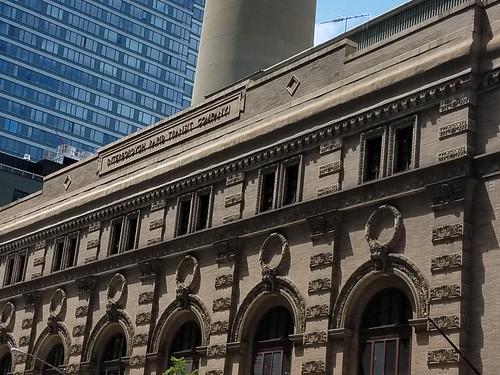
The IRT Powerhouse, now the Consolidated Edison Powerhouse
“We are so proud to be designating this outstanding building that had been on the (LPC’s) calendar for decades,” LPC Chairman Meenakshi Srinivasan said in the announcement on Dec. 5, the day the LPC approved the new city landmark. “This building is both an engineering feat and an architectural treasure that has endured for over a hundred years. Our designation will ensure its long-term presence and enhance the streetscape with the majesty and craftsmanship of this beloved historic icon.”
Mindful Walker first advocated the landmark protection in 2009, joining with other historic preservation and city architecture advocates, such as the Municipal Arts Society and Landmark West; activists; and citizens’ groups. My appreciation of it first grew out of looking at the building during my walks in the Hell’s Kitchen neighborhood, and always feeling awestruck by its presence, beauty, and architectural grandeur.
Its majesty was born of the schemes and plans of the city’s powerful, and its completion came through the painstaking, difficult labor of hundreds of workers, including many immigrants. This edifice with its vast systems powered a rail network that wove New York City together like never before. This is a monumental building expressive of its era, purpose, and achievement.
The construction and opening of New York City’s subway system was a mammoth undertaking, and it required engineering and technological ingenuity on an unprecedented level. The IRT directors sensed the moment as well in fashioning the building that would power the subway system. They took a personal interest in the building’s design and appearance, and believed that the architecture and decoration should match that of other major civic buildings. It is as grand and speaks of as lofty a purpose as buildings around the turn of the 20th century devoted to the arts, learning, and government, such as the Brooklyn Museum (1897), the New York Public Library (1911), and the New York State Supreme Court, Appellate Division (1900).
The City Beautiful
Within its walls would be electrical generators, boilers, condensers, engines, steam pipes, chutes and bunkers of coal, and girders. Yet the exterior reflected a “classical temple,” albeit one that “paid homage to modern industry,” as author Clifton Hood wrote in his book, 722 Miles: The Building of the Subways and How They Transformed New York. Renowned architect Stanford White volunteered his services to create the exterior design and the selection of materials. The firm in which White was a partner – McKim, Mead, and White – designed many of the glorious buildings during an extraordinary flowering of civic beauty and architecture.
The IRT Powerhouse is a surviving example of the City Beautiful movement, an approach that grew out of the 1893 World’s Columbian Exhibition in Chicago. It promoted a philosophy that well-designed, beautiful, and aesthetically pleasing buildings and urban spaces such as parks and plazas would benefit cities and help cure social ills. (The latter promise proved much more complex to address over subsequent decades.) The Beaux-Arts style, with its classical order, elements, sumptuous materials, and many flourishes, predominated in these City Beautiful structures, whether for museums or urban transportation structures. White designed a stately, fine, and gorgeous building in the French Renaissance style, with an exterior of Milford granite and Roman brick, and a profusion of terra cotta decoration. Up close, it’s splendid, with terra cotta embellishments of leaves, flowers, medallions, swags, and wreaths. The eagles are especially striking.
The jagged lightning bolts on various exterior panels convey the power and prowess of what was taking place within the building. Indeed, the operation within, set up to provide electrical power for up to 800 subway trains on 13 miles of track, was a marvel of a new era in electrified urban transportation. As the LPC noted, William Barclay Parsons, the Rapid Transit Commission’s chief engineer, decided to run the new subway system using electricity. The building needed to not only be immense but close to water transportation. Barges transported tons of coals to a pier at the end of West 58th Street, where, once it was crushed and weighed, was conveyed from the waterfront pier through an underground tunnel and carried via conveyors to the top of the boiler house.
The powerhouse attracted widespread interest. Scientific American, among various journals and newspapers, published an article on Oct. 29, 1904 (two days after the subway system’s opening), with drawings and much data that captured the intricacy and immensity of the powerhouse’s systems that were geared to produce a maximum of 132,000 horsepower. The boiler room, with 72 Babcock & Wilcox boilers, had an aggregate heating surface of 432,576 square feet. The scientific article’s many incredible details convey a sense of how impressive the powerhouse was in its era. (A collection of articles, images, and sketches of the IRT Powerhouse’s interior workings can be found on this nycsubway.org Wiki page.)
“A Designation to Celebrate”
Why does the landmark designation matter so much? For one, walk around the neighborhood and notice how many glass towers have gone up within proximity. This building resides on extremely valuable real estate. The landmark designation recognizes, protects, and honors a magnificent treasure from an era distinguished by buildings of grand visions. The IRT erected it, after all, to power a citywide rapid transit subway system for all. Moreover, it doesn’t sit as a relic but continues to serve in New York’s energy infrastructure.
Those who remained steadfast for years in advocating for the designation deserve much credit. “We congratulate the Landmarks Commission and Con Ed for preserving this magnificent structure which is a glory of the West Side and an architectural and engineering marvel,” said Peg Breen, president of the New York Landmarks Conservancy, in the LPC announcement. “This is truly a designation to celebrate.”
Ultimately, the IRT Powerhouse remains as an affirmation of architectural beauty, societal achievement, and common civic purpose. Such a landmark, from over a century ago, provides no small amount of solace and inspiration in our turbulent times.
Exploring the Powerhouse Further
Check out additional articles and photos of Mindful Walker’s explorations and advocacy for the powerhouse.
The building’s message of resilience
A Subway Powerhouse Speaks to Today
A walk around the powerhouse
Taking in the Subway’s Old Powerhouse
The powerhouse history and the campaign for designation
The Place That Powered the Subway Lines
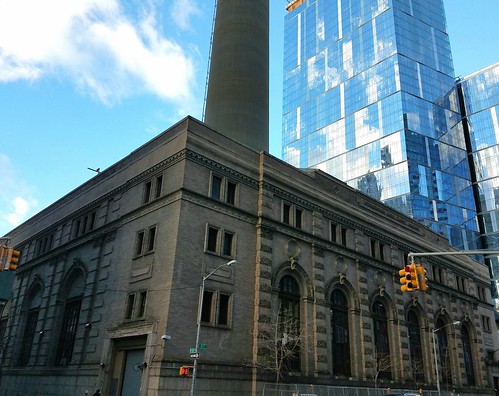
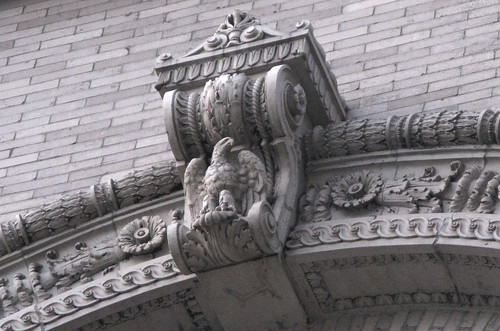
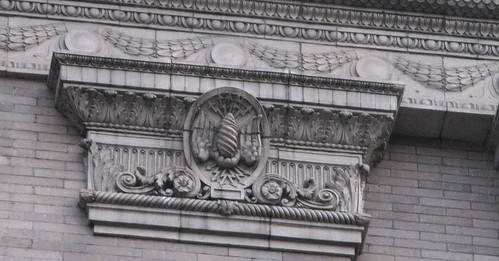

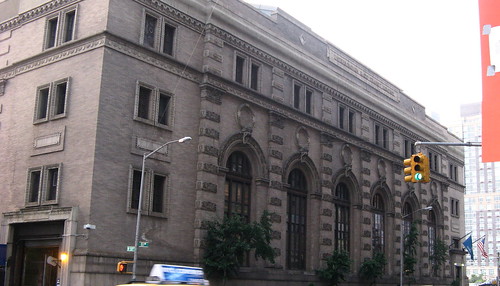
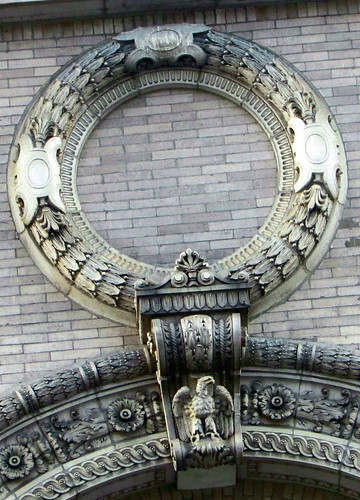
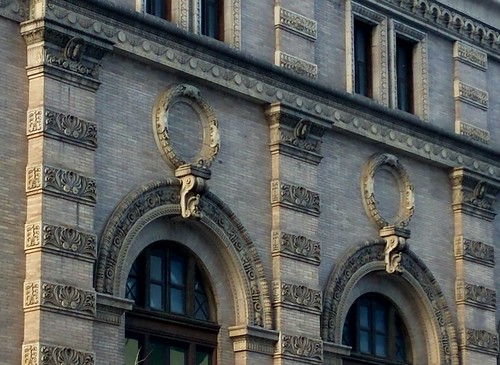




This article is beautifully written, detailed, and informative. I could easily walk by this building and miss the history and grandeur this article has made me aware of. I am so grateful to Mindful Walker and other activists who have preserved this building and who work to preserve other such sacred sites.
Thank you so much for your gracious and wonderful response to the IRT Powerhouse article. I am happy that you enjoyed it!
As you allude to in your sentence about walking by, this is how I first got acquainted with it – by nearly walking by and then taking a look at this incredible structure. I was then inspired by the citizens and groups who were concerned that it could become lost. It is a grand place, and I hope that children are seeing it and learning about its history, its significance to New York’s subway system and its role today, and the people who worked to build it. Thank you again!
Susan
I used to teach at John Jay College, which is only a couple of blocks from the powerhouse. Every once in a while, I’d walk by to look at it. It has always amazed me that anyone ever thought to make an industrial building so beautiful. Nothing like it would ever be built today, which is why I’m happy that it’s landmarked.
Justine,
I wonder how many of us have walked by the IRT Powerhouse to enjoy and appreciate it in this way. I truly wondered if the landmark designation would ever occur, and am also happy the LPC designated it. I keep thinking about the new designs of today for industrial and commercial buildings. While my study, comparisons, and thoughts are far from fully formed about this, I believe that today’s designs have lost something in their storytelling. This building, at its time of opening, honored both the past and present, in its design and iconography.
It’s wonderful that you honored the appreciated the powerhouse in your walks!
Thank you,
Susan
I saw this building for the first time yesterday. What stood out the most for me was its gigantic smokestack.
Do you know how tall it is?
Yes, that smokestack is quite commanding. ConEdison constructed this smokestack in 1968, and it is 500-feet-tall, according to the preservation plan of the Department of Historic Preservation at the Columbia University Graduate School of Architecture. Mighty tall!
When my daughter and her family moved to West End Avenue and West 63rd, the first thing I noticed was this building. I thought what a different building compared from all the glass ones going up around it. Now because of this article, for sure I’m going down to explore it next time I’m in town. I’m from AZ, and I love to see some of old NYC. I’m glad some of it is around the corner!
Hi Thelma,
How wonderful that you noticed the Powerhouse building! It truly is incredible in its massive quality combined with a grace and stature. Its terra cotta decoration is a treat for the eye. I now think this is even more so because it stands out with this one-of-a-kind character in a sea of glass buildings.
When you visit, it would be great to hear your impressions after you walk around and explore it.
Thanks for sharing this!
Susan
I worked in this building on a six-week project back around 2009. It’s quite an architectural work-piece. It was largely empty inside, but still had some of the old DC gear electrical though no longer in commission. The old coal trolleys were still in there, but functionally I think it only had one boiler and a couple of emergency generators inside. I think its primary function was to provide steam to other buildings, but there was an emergency generator in there that I was working on. It’s a very large building and reminded me of military base building construction, big and sturdy.
Hi Doug,
That is a great first-person recollection about the inside of the building. So many walk outside, but not many at all get to be inside. Thank you for the description! I imagine it must be incredible to see the architectural features and the old coal trolleys. It’s good that the building is still functioning in a productive way (though not as its original purpose).
It took a bit of time for those advocating its landmark designation to be able to breathe a sigh of relief that it would be landmarked by New York City, and thus protected. I first wrote about it the year (2009) that you said you were working there. I walked by it again and again, and still do. I am so pleased that you offered a recollection of working inside!
You may have seen this, but in one of the essays I wrote, I cited a page that has collected original reporting on its features and construction, from publications such as the Scientific American, Electric Railway Journal, and the New York Times. It has excellent details, photos, and some sketches that show all that was in the interior — quite something!
https://www.nycsubway.org/wiki/The_Interborough_Power_Plant
I really appreciate you sharing your experience here.
Gratefully,
Susan